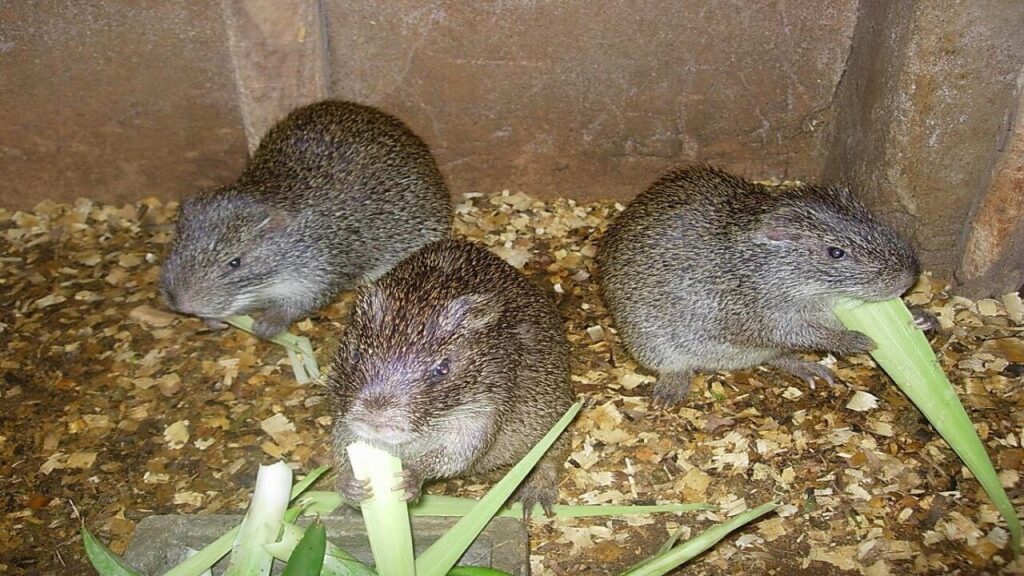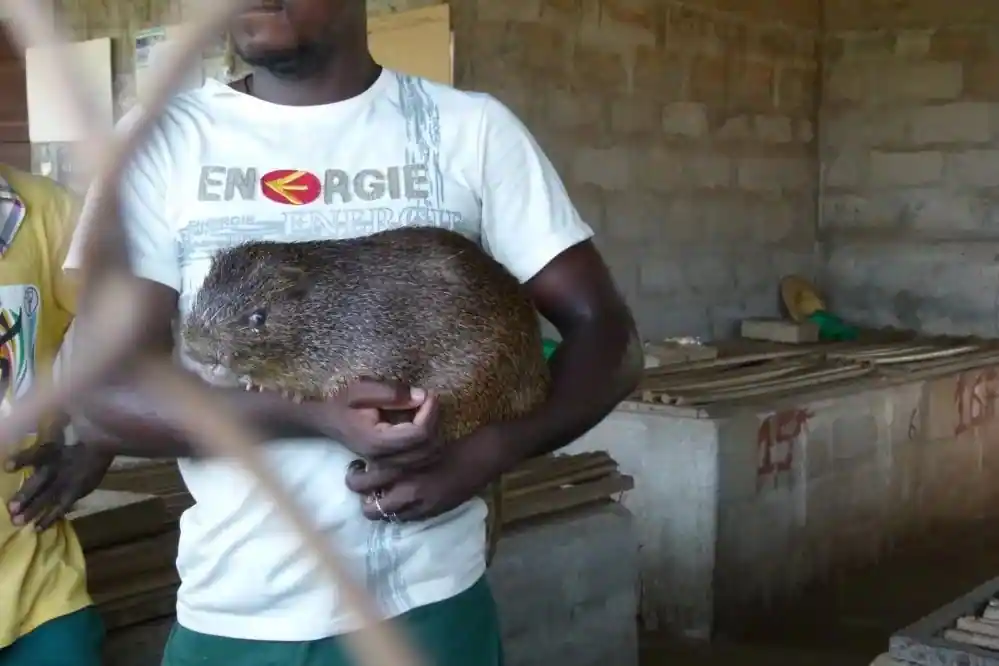Warning: Attempt to read property "post_excerpt" on null in /home/tobivibes/public_html/wp-content/themes/chromenews/inc/hooks/hook-single-header.php on line 87
If you are considering starting a grasscutter farming business in Nigeria, you are on the right path to a potentially profitable venture. Grasscutters, also known as cane rats, are a native rodent species in Africa that is highly sought after for its meat. With a growing demand for grasscutters and relatively low startup costs, this agricultural opportunity holds great promise. In this article, we will provide you with a detailed guide on how to start and run a successful grasscutter farming business in Nigeria.
What is Grasscutter Farming?
Grasscutter farming involves raising grasscutters (Thryonomys swinderianus) in a controlled environment for commercial purposes. These rodents are a popular source of protein and are considered a delicacy in many parts of the world. Grasscutter farming offers several advantages, including ease of management, rapid reproduction, and environmental sustainability.
Benefits of Grasscutter Farming
- Grasscutters are a popular source of protein and a delicacy.
- They are easy to raise and require minimal space.
- Grasscutters reproduce quickly, allowing for rapid herd growth.
- They are environmentally friendly, requiring minimal additional resources.
- The market for grasscutters is growing in Nigeria, offering opportunities for expansion.

Factors to Consider Before Starting
- Legal Requirements – Before starting a grasscutter farm, ensure you have the necessary permits and licenses required by local authorities. Familiarize yourself with the legal regulations governing animal farming in your area.
- Farm Location – Choose a suitable location for your grasscutter farm. Consider factors such as accessibility, availability of water, and the land’s suitability for grasscutter rearing.
- Climate Conditions – Ensure that the climate in your chosen location is conducive to grasscutter farming. Grasscutters thrive in areas with a moderate climate and can tolerate both humid and dry conditions.
- Farm Size – Determine the size of your farm based on the number of grasscutters you plan to rear. Provide adequate space for the animals to move around comfortably and construct suitable cages or pens.
- Equipment and Infrastructure – Identify the necessary equipment and infrastructure for your grasscutter farm, including fencing, feeders, watering systems, and shelter. Ensure you have the resources to acquire or construct these facilities.
- Startup and Operational Costs – Evaluate the cost of starting and running a grasscutter farming business. Consider expenses such as land acquisition, construction, feeding, healthcare, marketing, and transportation.
- Marketing and Distribution – Channels Develop a marketing strategy to sell your grasscutters effectively. Identify potential buyers such as restaurants, hotels, supermarkets, and individual consumers. Explore partnerships with local distributors or establish direct sales channels.
- Risk Assessment – Understand the potential risks and challenges associated with grasscutter farming, such as disease outbreaks, predators, and market fluctuations. Develop contingency plans to mitigate these risks and ensure the long-term sustainability of your business.
Starting Your Grasscutter Farming Business
- Business Plan – Create a comprehensive business plan that outlines your goals, objectives, target market, unique selling proposition, marketing strategies, financial projections, and management structure. This plan will serve as a roadmap for your business’s success.
- Farm Setup and Infrastructure – Secure a suitable piece of land for your grasscutter farm. Construct cages or pens to house the animals, ensuring they are secure, well-ventilated, and provide adequate space. Install appropriate fencing, feeding troughs, and watering systems.
- Procuring Grasscutters – Obtain healthy grasscutters from reputable breeders or suppliers. Ensure that the animals are disease-free, well-nourished, and of breeding age. Alternatively, you can start with a breeding pair to establish your own breeding stock.
- Feeding and Care – Develop a proper feeding program for your grasscutters, incorporating a balanced diet of grass, leaves, and supplementary feed. Provide clean drinking water and ensure the animals’ health by regularly monitoring their well-being, administering vaccinations, and treating any illnesses or infections.
- Breeding and Reproduction – Understand the breeding cycle of grasscutters and create suitable conditions to encourage mating and reproduction. Establish separate breeding colonies or cages and monitor the gestation period to prepare for the birth and care of the offspring.
- Health Management – Implement a comprehensive health management program that includes regular check-ups, vaccinations, deworming, and disease prevention measures. Consult with veterinarians or agricultural extension officers for guidance on maintaining the health of your grasscutters.
- Record Keeping and Financial Management – Maintain detailed records of your grasscutter farm operations, including breeding, feeding, healthcare, and sales. Keep track of your expenses and income to monitor the financial performance of your business.

Start-up Costs
To establish a grasscutter farming business, you will need to allocate a budget for various start-up expenses. In Nigeria, the cost of setting up a grasscutter farming operation can vary depending on several factors, such as the scale of the farm and the existing infrastructure. However, as a general guideline, an initial investment of around Naira 1,000,000 to Naira 2,000,000 is typically required.
Here’s a breakdown of the estimated start-up costs in Naira:
- Land acquisition or lease: Naira 200,000 to Naira 500,000
- Construction of cages or pens: Naira 300,000 to Naira 600,000
- Purchase of grasscutters: Naira 200,000 to Naira 400,000
- Fencing, feeders, watering systems, and other infrastructure: Naira 200,000 to Naira 400,000
- Permits, licenses, and legal requirements: Naira 100,000 to Naira 200,000
Operational Costs
Running a successful grasscutter farm requires careful financial planning and management of ongoing operational expenses. While the exact costs may vary based on the size and scale of your farm, you should be prepared to allocate funds for the following:
- Feeding: Naira 50,000 to Naira 100,000 per month
- Healthcare: Naira 20,000 to Naira 50,000 per month
- Labor: Naira 50,000 to Naira 100,000 per month (depending on the number of workers)
- Marketing: Naira 20,000 to Naira 50,000 per month
- Transportation: Naira 10,000 to Naira 30,000 per month
- Utilities: Naira 10,000 to Naira 20,000 per month
Remember, these figures are approximate and can vary based on several factors, such as the size of your farm, market prices, and the availability of resources.
Revenue Potential
When managed properly, grasscutter farming can be a lucrative venture, with the potential to generate significant profits. With a serious approach and dedication to your business, you can expect to earn at least Naira 3,000,000 per year.
It’s important to note that the revenue potential can vary based on various factors, including market demand, product quality, marketing strategies, and operational efficiency. Conduct thorough market research, identify potential buyers, and explore value-added opportunities to maximize your earnings.
Conclusion
Starting a grasscutter farming business in Nigeria can be a rewarding venture with the right knowledge, planning, and dedication. By understanding the basics of grasscutter farming, considering important factors, and implementing effective management strategies, you can establish a successful and profitable business in the growing market for grasscutters. Remember to continuously educate yourself, adapt to market demands, and prioritize the well-being of your grasscutters for long-term success.






